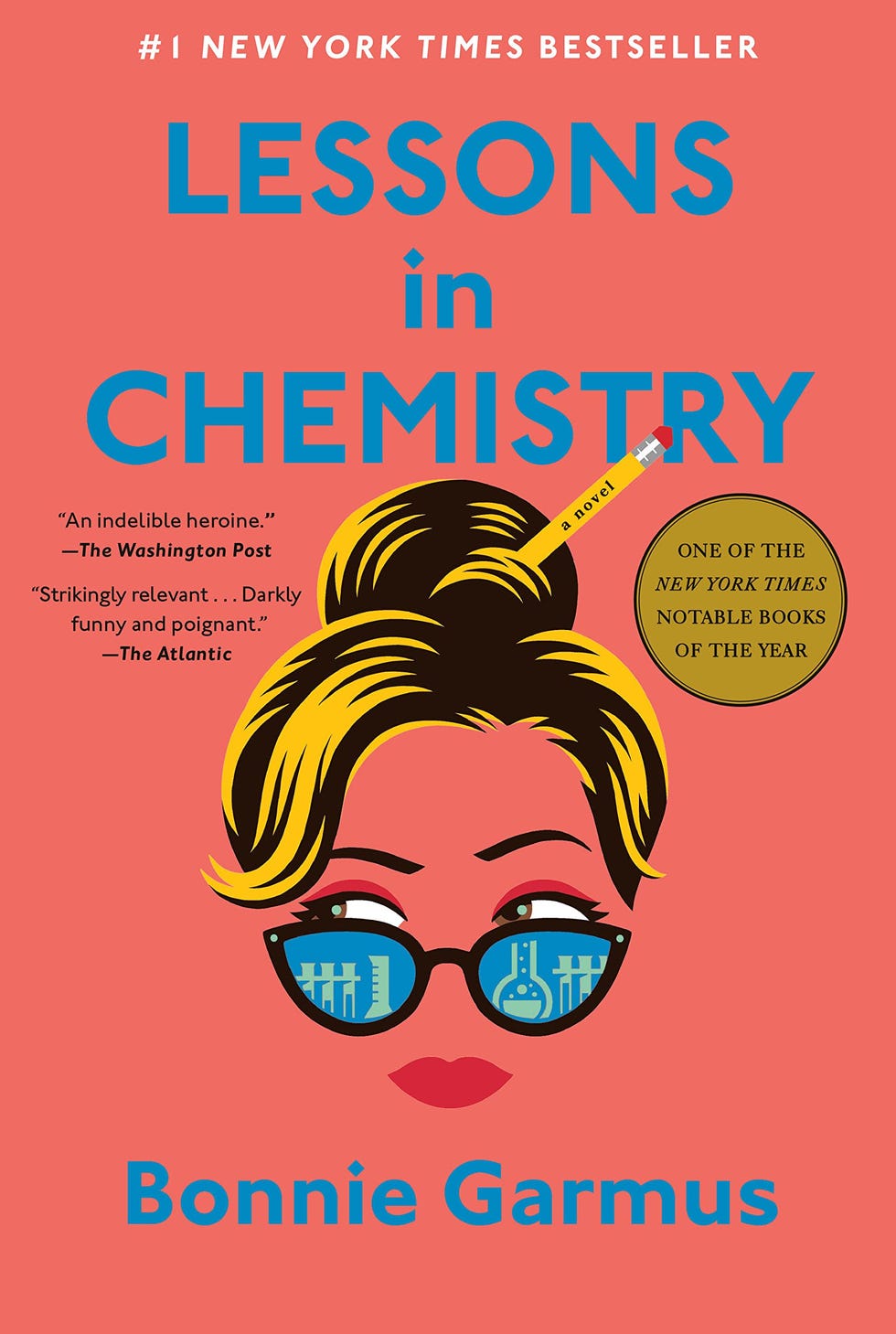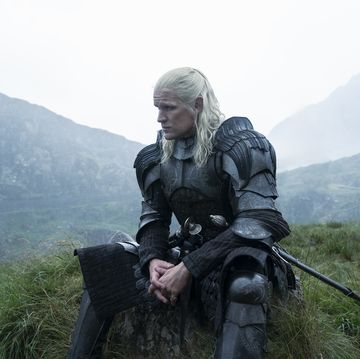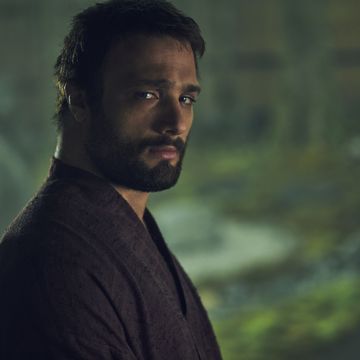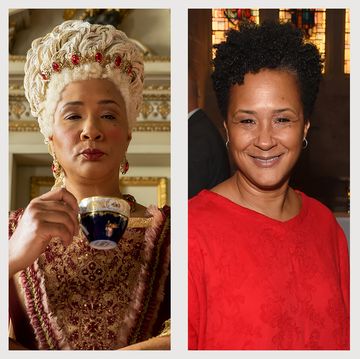Adapting Bonnie Garmus's bestselling and beloved novel, Lessons in Chemistry, for the screen was a daunting task for showrunner Lee Eisenberg.
"There was so much to capture and so much beauty," Eisenberg, who was previously an executive producer on shows like The Office, WeCrashed, and Jury Duty, said. "Part of it was an intense nervousness and anxiety that I was going to do a book that I fell in love with a disservice. So sheer terror was probably motivating me to type very fast and to work extremely hard on the show."
Still, he adds, the process was "incredibly complicated and exhilarating. It's really the most fun that I've ever had writing a show before." Ahead of the premiere, Eisenberg chatted with Town & Country all about the page-to-screen adaptation process, the biggest differences between Garmus's novel and the Apple TV+ drama, and about casting Six-Thirty the dog.
Light spoilers ahead for the first two episodes of Lessons in Chemistry.
When did you first come across the novel and decide to adapt it?
My wife had read the book first and immediately just said, 'This is a series.' When she says, 'You need to read something,' everything stops and I do immediately. I was completely taken with the writing. I feel like the highest compliment I can give another writer is when I'm jealous. Page after page of Bonnie Garmus's writing, I was like, oh, that's such a good turn of phrase, how did she come up with that, that's so clever. The turns in the story, the twists, the emotion, it was incredibly funny...
I've had a deal at Apple now for almost four years, and found out that they had the rights to it. I cold called them. They're people I speak to all the time—I'm pitching them things, they often bring me things—I've never called them and said, 'Hey, could I work on something that you already have?' The timing just worked out.
Where do you start with the adaptation process?
I will tell you a little secret: I've never adapted anything. I talked a lot with Sarah Adina Smith who directed the pilot, with some of the other producers, and every night—probably much to my wife's dismay—starting at dinner and going to around midnight. I knew where I wanted the pilot to end, and so I started working backwards from that ending. I liked the idea of having book ends; I wanted to give a taste of two different time periods, because the show and the book toggles back and forth in time.
When you have a traditional storyline, you have your main character—that's the A story—and then you have side characters, and that's the B story. So the way that a show moves along is you're with the A story character for a scene and then you cut to the B story and then you do two A story scenes and then you cut to the C story and that's the way that you're structuring it. As I got into Lessons in Chemistry, it was all Elizabeth. Part of that was because I had Brie Larson who is an astonishing actress and a lovely human. But this story needed to be told so much from her perspective; that was always the approach for me.
How did you balance the fandom's expectations with making the show?
We approached it as fans. The book is so excellent that any deviation that we made from the book was discussed. We spent days debating what the merits were of things. Sometimes there's moments in the book that would be covered in a paragraph and it's like, well, what if that was the idea for an episode? What turned from three sentences of two strangers writing letters back and forth all of a sudden becomes the structure of an entire episode. That's where adaptation to me is so exciting.
Any opportunity I had to take Bonnie's words and cut and paste them into my final draft—believe me, I did. I do think that for fans of the book, the show feels very much spiritually [the same]; we tried to hit the greatest hits. We didn't do that cynically, we did it because they were excellent choices. Everything else that we filled in, were [based on] early conversations that I had with Bonnie, talking about changes that I wanted to make and things I want to explore. I very much wanted her to sign off and I wanted her to understand why things would maybe change.
What went into the decision to change Harriet to a younger, Black woman?
With Harriet, some of these things become happy accidents. We had come across Aja Naomi King, and were utterly blown away by her and we hadn't cast Harriet yet. And we just said: What if we changed Harriet? When I spoke to Bonnie, she very intentionally never assigned race to the characters. So when I pitched her that idea, she was very intrigued by it. We really took great care, we talked to Aja a lot about it, and felt like there was a real opportunity.
This is a show about people on the margins. You're looking at it through the prism of a white woman who is working and living in a patriarchal society and is using her wit and grit to move forward. What must it be like for a Black woman during that time? A Black woman who's on her way to become a lawyer and people aren't taking her seriously—and that she's up against not only the patriarchal system, but also a system that lives off of segregation and overt racism. It was very intriguing for us to tell the story of these two women—where Harriet was a few years ahead in terms of motherhood, and they really created this bond.
We worked with an incredible professor, Dr. Shamell Bell, and really talked about her neighborhood, and this idea of freeways being cut through certain swaths of L.A.—not coincidentally, through Black neighborhoods. The neighborhood where we set the show, it was a very upper middle class, affluent Black neighborhood, and the neighborhood was decimated. They weren't afforded to the same opportunities that the white neighborhoods nearby were. Seeing Elizabeth contend with that, seeing Harriet as a voice for her neighborhood and her people—all of that was really intriguing to us.
Why did episode two end with Calvin's death? Was this always the plan?
We were endlessly debating it. We knew we had to handle with tremendous care. We had fallen in love with Lewis [Pullman, who plays Calvin] as we were developing the scripts and even as we started shooting the show—because we were writing the show as we were shooting it—so you're watching the chemistry between [Pullman and Larson] in episode one and you're like, but he's going to die. We really debated it. Ultimately, the show is about so much more than a love story—it's a story about grief, recovery, motherhood, parenting, and finding your village. It's about all about these moments in your life that seem random, and what happened to Elizabeth is truly to me unimaginable as a new father.
Lewis Pullman, to me, is a revelation and I'm obsessed with him and wanna put him in everything that I do for the rest of my career. Initially we had Lewis for three episodes and then I begged and pleaded with every single person that I could speak to, and we got him up to five episodes. So just finding ways of integrating Calvin into the show was incredibly important to us.
What do you view as the biggest changes that you think the book readers will be react to?
I think [Harriet] is the one that probably has been the most... I mean, there's certain aspects of Calvin's backstory. I don't want to spoil it; he grew up in a boys' home, that was something we took from the book, but his experiences at the home was something that wanted to connect it back to chemistry and science, and for both Elizabeth and Calvin showing the moment that they both kind of discover their life's passion.
What went into the decision to cast the dog, Six-Thirty, as a goldendoodle? Goldendoodles weren't really around in the period in which this story is set.
What's so funny, someone said to me, 'goldendoodles could have been around!' Everyone has their own take about it. But honestly, if you can suspend your disbelief about goldendoodles, which I hope the audience can, what we loved about Gus the dog is his soulfulness. In the same way that you cast a human, you get a feeling about someone.
The three reasons that we ultimately went with Gus was: He is incredibly lovable. He's cuddly, he felt like a dog that you wanted in your home. And then, we just needed an incredibly well trained dog! It was very emotional to shoot the show at times, and you can't have a dog that's running away off of a scene as a character is emoting. Gus really connected in an amazing way. Of all the things, Gus is a good actor and he's a really good scene partner.
Would you adapt another major book club book?
With the right book, I would do it again in a heartbeat. When I read Lessons in Chemistry, I was just smitten with Elizabeth and so taken with Calvin, and in my bones just felt like I could write this—which rarely happens! That's what I connect to most and sometimes those are original ideas, sometimes those are adaptations.
It's such a fantasy to me that I read a book and then very, very shortly thereafter I was able to work with an Oscar-winning actress who's now become a good friend and work with the loveliest and most talented crew ever to build a world. That's so much of what I do for a living: It's world building and character building. To do something period that was as lush and lavish as this was, but really tell a story that's so heartwarming and heart wrenching at times, it was the opportunity of a lifetime.
This interview has been lightly edited and condensed for clarity. Lessons in Chemistry is now streaming on Apple TV+; new episodes drop weekly.
Emily Burack (she/her) is the Senior News Editor for Town & Country, where she covers entertainment, culture, the royals, and a range of other subjects. Before joining T&C, she was the deputy managing editor at Hey Alma, a Jewish culture site. Follow her @emburack on Twitter and Instagram.


















